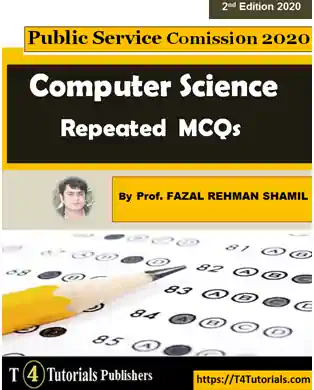1. What is the primary focus of meteorology?
(A) Long-term weather patterns
(B) Short-term weather forecasting
(C) Climate change studies
(D) Historical climate data
2. The layer between the hardware and the user program is:
(A) Operating environment
(B) System environment
(C) Operating system
(D) None
3. Which of the following is the main function of the command interpreter?
(A) To handle the files in the operating system
(B) To provide the interface between the API and application program
(C) To get and execute the next user-specified command
(D) None of the above
4. Allocation of memory to each process according to its size is known as:
(A) Proportional allocation algorithm
(B) Split allocation algorithm
(C) Equal allocation algorithm
(D) None of the above
5. ___________________ is built directly on the hardware.
(A) Computer Environment
(B) Application Software
(C) Database System
(D) Operating System
6. The resource management can be done in an operating system via:
(A) Space division multiplexing
(B) Both time and space division multiplexing
(C) Time division multiplexing
(D) None
7. A high priority process is treated ___________ a low priority process, with either equal or proportional algorithm.
(A) Lesser than
(B) Greater than
(C) Same as
(D) None
8. _________________ Operating System does not implement multitasking.
(A) Windows XP
(B) Windows NT
(C) Windows 98
(D) MS DOS
9. When a process fails, most OS write the error information to a:
(A) New file
(B) Another running process
(C) Log file
(D) None
10. Which replacement allows a process to select a replacement frame from the set of all frames, even if the frame is currently allocated to some other process?
(A) Local
(B) Global
(C) Universal
(D) Localx
11. A platform for other software to run on is called:
(A) Operating System
(B) System Software
(C) Application Software
(D) All
12. ____________________ facility, both in user processes and in the kernel, dynamically adds probes to a running system.
(A) DLocate
(B) DAdd
(C) DMap
(D) DTrace
13. Operating system is:
(A) Link that is to interface the hardware and application programs
(B) Both A & B
(C) Collection of programs that manages hardware resources
(D) All of the mentioned
14. The interface to access the services of the operating system is provided by:
(A) Assembly instructions
(B) API
(C) Library
(D) System calls
15. Which one is not true from the following?
(A) Kernel is made of various modules which can not be loaded in running operating system
(B) During booting, the kernel is the first part of the operating system to load into memory
(C) Kernel is the program that constitutes the central core of the operating system
(D) During the entire computer session kernel remains in the memory
16. By the operating system which one error will be handled from the following?
(A) Connection failure in the network
(B) Power failure
(C) All of the mentioned
(D) Lack of paper in the printer
17. The command interpreter in The main function is:
(A) To handle the files in the operating system
(B) To get and execute the next user-specified command
(C) To provide the interface between the API and application program
(D) None of the mentioned
18. The resource management can be done by operating system via:
(A) Both time and space division multiplexing
(B) Space division multiplexing
(C) Time-division multiplexing
(D) None of the mentioned
19. In most operating systems, if a process fails it writes the error information to a:
(A) New file
(B) Another running process
(C) Log file
(D) None of the mentioned
20. In both user processes and in the kernel, which facility dynamically adds probes to a running system?
(A) DMap
(B) DLocate
(C) Both A & B
(D) DTrace
21. Which one is not a real-time operating system from the following?
(A) Palm OS
(B) Windows CE
(C) VxWorks
(D) RTLinux
22. OS X has:
(A) Monolithic kernel with modules
(B) Microkernel
(C) Hybrid kernel
(D) Monolithic kernel
23. The systems that allow only one process execution at a time are:
(A) Unitasking systems
(B) Uniprogramming systems
(C) Uniprocessing systems
(D) Both A & C
24. Each process has its own:
(A) Open files
(B) Pending alarms, signals, and signal handlers
(C) Both A & B
(D) All of the mentioned
25. The new process in Unix is created by which system call?
(A) Create
(B) New
(C) Fork
(D) None of the mentioned
